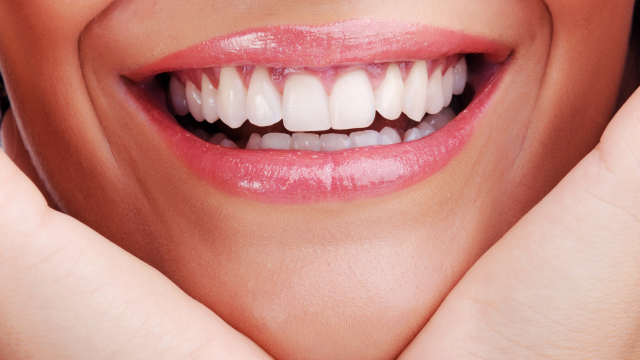What is Bleaching?
Just as every person has skin color and eye color, there is also tooth color. The color of the teeth varies according to race, age, and geographic region. For example; While the teeth of the black race are white, the teeth of the white race are closer to yellow. Our teeth can become darker for different reasons. The drugs used, the high amount of fluorine in the drinking water, etc. Bleaching or bleaching is the process of removing the discoloration of the teeth. It can be applied to one tooth or all teeth. In the bleaching method, the natural tooth color is lightened by approximately 1-2 tones.
The whitening process should be done under the control of the dentist and cheap products from the markets should not be preferred. Before the procedure, the dentist will examine your teeth. If you have inflammation in your gums and stones in your teeth, they must be removed first. To perform the whitening process, your dentist should not have seen cracks in your teeth and excessive wear on the enamel during the examination of your teeth. These can cause you to feel too much sensitivity after the whitening process. The bleaching (teeth whitening) process is different from the process of removing the stains (Polutür) of the teeth applied at the end of the gingival treatment. With the polishing process, stains such as tea and cigarette sticking to the teeth are removed. In the bleaching process, 1-2 tons of bleaching is provided in the original color of the tooth following the polishing process.
Bleaching (Teeth Whitening) Methods
Two methods are used today; These methods, called Home-Bleaching (applied at home) and Office-Bleaching (applied in the clinic), can be applied together (combined system) when bleaching (such as tetracycline colorings) or more bleaching is desired in some stubborn cases.
Home-Bleaching; In this method, the patient applies the drug at home by himself. The duration of the application is 7-14 days. It should be applied 6-8 hours a day. In recent years, depending on the changes in drug concentration, it has become possible to get results with 2-3 hour applications per day. Upper and lower impressions are taken from the patient and a special plate is prepared for bleaching. The patient applies the drug to the plaque and puts the plaque in his mouth at any time -preferably at night while sleeping. The concentration of the bleaching gel used in home bleaching is kept low so that it does not damage the teeth or gums.
In the Office-Bleaching method, the physician administers the drug to the patient in the clinic. If there is gingivitis or tartar, plaque formation in the oral environment, it should be treated beforehand and the teeth should be prepared. First, your gum protectors are applied to your gums with a light device. The whitening gel is applied to the teeth one by one and a light source is applied for 15 minutes. This process is repeated 2 or 3 times. The process takes an average of 1 hour. Activation of the drug is done by light, heat, or laser. The efficiency of the system increases in direct proportion to light and temperature. This system can be used by smokers, but it is recommended not to use many coloring products, including cigarettes, for at least 48 hours after the procedure.
Combined System: Home-Bleaching is first applied to the patient, followed by Office-Bleaching, and the treatment is completed. This method gives more effective results in cases where the tooth color tone is dark and stubborn.
Can Bleaching Be Applied To A Tooth That Has Changed Color As A Result Of Root Canal Treatment?
Sometimes teeth can change color after root canal treatment. The most important reason for this discoloration is that the blood leaks into the dentin canals and coagulates, or that some of the canal-filling materials used cause discoloration of the teeth. With the intracoronal bleaching method, it is possible to lighten the color of the materials in the dentin canal and return the tooth to its former color. Since the root part of the tooth is protected before starting the bleaching treatment, this procedure has no harm to the root canal treatment done before.
Does Bleaching Application Have Any Harm to Teeth?
The substances used in bleaching applications are peroxide derivatives. Components such as sodium peroxide, hydrogen peroxide, and carbamide peroxide are the most commonly used peroxide derivatives and it has been proven by clinical trials that they are components that do not disrupt the structure of the tooth.
The difference between home bleaching systems and office bleaching systems is that the applied bleaching products contain fewer bleaching agents. The agents used in the home bleaching system are gels containing carbamide peroxide at rates ranging from 10% to 22%, which have almost the same potency as a gel with a 3% hydrogen peroxide concentration. However, gels ranging from 25% to 35% are applied in teeth whitening products applied professionally by the physician in the office.
The physician should talk to the patient about his/her background. The reason for the discoloration and darkening of the teeth must be known. Accordingly, it should be decided whether it is suitable for teeth whitening and, if appropriate, the most suitable whitening method and material should be selected for the patient.
Teeth whitening can only be done under the control of a physician without damaging the teeth and gums; Therefore, teeth whitening procedures should be done under the control of a dentist.
Is pain felt during the teeth whitening process?
No anesthesia (needle) is applied during the teeth whitening process. In this process, which we apply to the tooth enamel, the patient does not feel any pain, since the enamel tissue does not have a nervous system. During the procedure, the whitening gel is applied to the tooth enamel. In the bleaching technique applied in the office, the mouth of the patient remains open for about 45 minutes during the bleaching process. This may tire some patients. Then the patient can be given a rest break halfway through the procedure. Sometimes, there may be a feeling of cold, which we call temporary sensitivity after the procedure. This situation will end in 2-3 days at the latest. If this situation continues, then fluoride can be applied to the patient to relieve this sensitivity. It should not be forgotten that wine, tea, coffee, cigarettes, cola, and similar drinks and foods that stain teeth should be avoided.
Who Can Have Whitening?
The bleaching process should not be applied to those under the age of 18. At this age, the pulp chamber and the nerves of the tooth are in their largest dimensions. Whitening should not be applied to pregnant women, those with extremely sensitive teeth, and those who are allergic to peroxide, a whitening agent.
Whitening is not applied to people who have broken, cracked, abrasion, and sensitive teeth. It cannot be done in people whose gums have been pulled too much and most of the roots have been exposed. In addition, very, very advanced tetracycline staining can not get results.
Smokers are advised to reduce or completely quit smoking to get better results from the bleaching process.
The whitening agents that the patients buy themselves from pharmacies can have bad results if the tooth and gingival structure is not suitable. In teeth whitening procedures, patients should consult their physician.
Does Teeth Whitening Work on All Types of Discoloration?
What we eat and drink plays an important role in changing the color of our teeth. Drinks containing colorants, cola, carrot juice, cherry juice, red wine, and pomegranate juice are effective in coloring our teeth. In addition, tea and coffee containing caffeine also discolor our teeth too much. At the same time, the use of tea and cigarettes, especially cigarettes and coffee, accelerates the coloring of the teeth more. Again, some of the drugs used can cause discoloration of the teeth. Especially in childhood, the effects of drugs and antibiotics used during the formation of full teeth are important.
More success is achieved with the bleaching process in yellow discoloration of teeth than gray discoloration. Gray discolorations can occur either congenitally or after root canal treatment. The discoloration that occurs after root canal treatment has been described above. When all teeth have a common gray color, the whitening process is more difficult. In the case of yellow and similar stains, the teeth whitening process is easier.
How long does the whiteness last after the teeth whitening procedure?
After the whitening process, we make our patients apply a white diet for a while. We recommend that they stay away from foods that may cause discoloration. We also recommend that patients avoid foods that cause staining of their teeth and contain too much food coloring, specially dyed with dark dyes when the white diet period is over after bleaching.
It should be kept in mind that after the teeth whitening process, especially fruit juices, tea, coffee, and similar beverages stain the teeth much more and should be consumed carefully, and it is appropriate to brush the teeth after use. Regular brushing is necessary for maintaining our oral and dental health, as well as making our teeth appear whiter.


